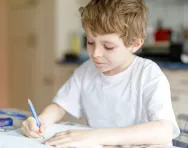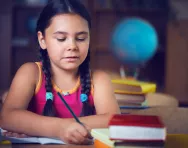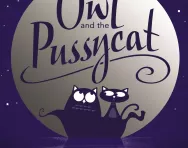Important update from TheSchoolRun
For the past 13 years, TheSchoolRun has been run by a small team of mums working from home, dedicated to providing quality educational resources to primary school parents. Unfortunately, rising supplier costs and falling revenue have made it impossible for us to continue operating, and we’ve had to make the difficult decision to close. The good news: We’ve arranged for another educational provider to take over many of our resources. These will be hosted on a new portal, where the content will be updated and expanded to support your child’s learning.
What this means for subscribers:
- Your subscription is still active, and for now, you can keep using the website as normal — just log in with your usual details to access all our articles and resources*.
- In a few months, all resources will move to the new portal. You’ll continue to have access there until your subscription ends. We’ll send you full details nearer the time.
- As a thank you for your support, we’ll also be sending you 16 primary school eBooks (worth £108.84) to download and keep.
A few changes to be aware of:
- The Learning Journey weekly email has ended, but your child’s plan will still be updated on your dashboard each Monday. Just log in to see the recommended worksheets.
- The 11+ weekly emails have now ended. We sent you all the remaining emails in the series at the end of March — please check your inbox (and spam folder) if you haven’t seen them. You can also follow the full programme here: 11+ Learning Journey.
If you have any questions, please contact us at [email protected]. Thank you for being part of our journey it’s been a privilege to support your family’s learning.
*If you need to reset your password, it will still work as usual. Please check your spam folder if the reset email doesn’t appear in your inbox.
Lauren Child’s 7 tips for raising a creative child

Lauren Child is best known as the author and illustrator of the much-loved Charlie and Lola and Clarice Bean picture books and author of the best-selling Ruby Redfort series. She’s also a former Waterstone’s Children’s Laureate, and used her role to encourage a new generation of budding readers and writers.
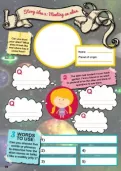
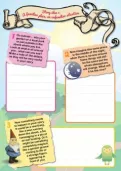
Download a FREE Creative Writing toolkit!
- KS1 & KS2 workbooks
- Bursting with fill-in prompt sheets and inspiring ideas
- Story structure tips, style guides and editing suggestions
‘We learn through our creativity; that’s how we explore our own minds and ourselves,’ says Lauren. ‘I want to encourage children to look around themselves and try creating something.’
We asked Lauren for her top tips for helping your child unleash their own creativity.
1. Be a proactive parent
You’re the best role model for your child, so let them see you reading, writing and even drawing for pleasure.
‘I grew up in a house where my parents were obsessive readers,’ says Lauren. ‘My father was an art teacher, so we always drew and there was always art all around us. And my mother was an English teacher so she always encouraged us to write things down.’
Try this: Treat your child to a selection of ‘grown-up’ art supplies, like a tin of top quality colouring pencils and their own sketchbook and notebook, to tempt them to put their ideas on paper through pictures or words.
2. Try different types of creativity
Creativity comes in many different forms, so encourage your child to think beyond writing a story or a poem.
‘I wanted to use my love of drawing and turn that into some kind of career, but I didn't know what,’ Lauren explains. ‘So I had a go at all kinds of different things, from designing lampshades to window displays, and finally hit upon the idea that I was going to write a film.
‘In the course of writing the film, I ended up writing a book. I don't know why it worked, but it did.’
Try this: Give your child opportunities to try a range of different creative skills – after-school and holiday clubs are often good places to start.
Let them experiment with clay, textiles or stop-motion animation using LEGO, or ask a relative to teach them to knit, crochet or paint with oils. Learning a new technique might suddenly unleash their creative side.
3. Make time to be creative
Many people – teachers and parents alike – feel that the pressure on schools to get results has resulted in creativity being squeezed out of the curriculum.
‘I hear about very young children being put under pressure and tested regularly, and having to meet certain standards and someone else’s criteria,’ Lauren says. ‘I feel for teachers, too, as it’s not what they really want to do. It’s a problem, as children don’t then learn at their own pace and in their own way.’
Try this: Whether or not your child is preparing for SATs or the 11+, make time for a regular creative slot in your weekly routine – such as a couple of hours on a Sunday afternoon.
There are all sorts of ways to fill it; you could take your child to a gallery, go to the park to collect materials for a nature collage, help them write a poem inspired by the day’s weather… The possibilities are endless.
Just make sure that in that window, the focus is on creating, not studying.
4. Look for everyday inspiration
‘I’m often asked where my ideas come from, and the answer is everywhere,’ Lauren says. ‘You only have to look out of the window, walk through a supermarket, or overhear people talking. Everything can be an inspiration.’
Try this: Take a trip to the shops, a walk in the woods or a visit to the swimming pool with your child, then afterwards, get them to list something they experienced for each of the five senses: sight, smell, hearing, touch and taste.
Young children may need prompting to come up with one thing per sense, while older kids might list several.
Either way, it’s a good way to train your child to pay attention to the world around them.
5. Keep a journal of family adventures
Holidays and days out are great opportunities to get creative.
‘My mum was very good at encouraging us to buy postcards when we went to see things, and we would stick them in a book and then write a little bit about where we had been,’ Lauren recalls.
‘Even if we only wrote one sentence about what we found interesting, it was a good thing to do.'
Try this: Take inspiration from Lauren’s family and help your child start a scrapbook for days out and holidays.
Collect postcards or leaflets to stick in, and encourage your child to write a few sentences or draw a picture to show what they liked about their outing. Before long, they’ll have a fascinating journal to flick through and spark ideas for stories or poems.
6. Encourage reading
It’s well known that children who read for pleasure do better at school, and reading (or being read to) outside school could also give their creativity a boost.
‘When you read for pleasure, for reassurance and to see things from another person’s point of view, it feeds you as a person,’ Lauren says.
Children can also use other people’s writing and drawing for inspiration. ‘You research writing styles and illustration styles by looking at and reading other people’s works, and not by imitating them,’ Lauren adds.
Try this: Library use has fallen by over 30% over the past decade, but your local library is THE best source of books for your child.
It means they can try out a range of different styles and genres, find out how authors and illustrators work, and use them as a springboard to develop their own ideas.
7. Be still
It often seems that there’s not much time to just ‘be’ in today’s hectic world, but Lauren thinks this is one of the most important skills for a budding author or illustrator.
‘Writing and illustrating are about observing, so take the trouble to be quite still and get better at noticing things,’ she explains.
‘Notice the little details, like how people put a sentence together, as these are what make a character believable. If I’m drawing somebody, the way they cross their legs tells me something about them. Observations are very important.’
Try this: Give your child the chance to sketch or write ‘in the field.’ Simply sitting in a café or in a playground and watching the world go by will hone their powers of observation and feed their creativity.
Working with BookTrust, the UK’s largest children’s reading charity dedicated to getting children reading, Lauren Child has launched a series of resources, Staring into Space, that can be used at school or home to help parents and teachers encourage creative thinking.

